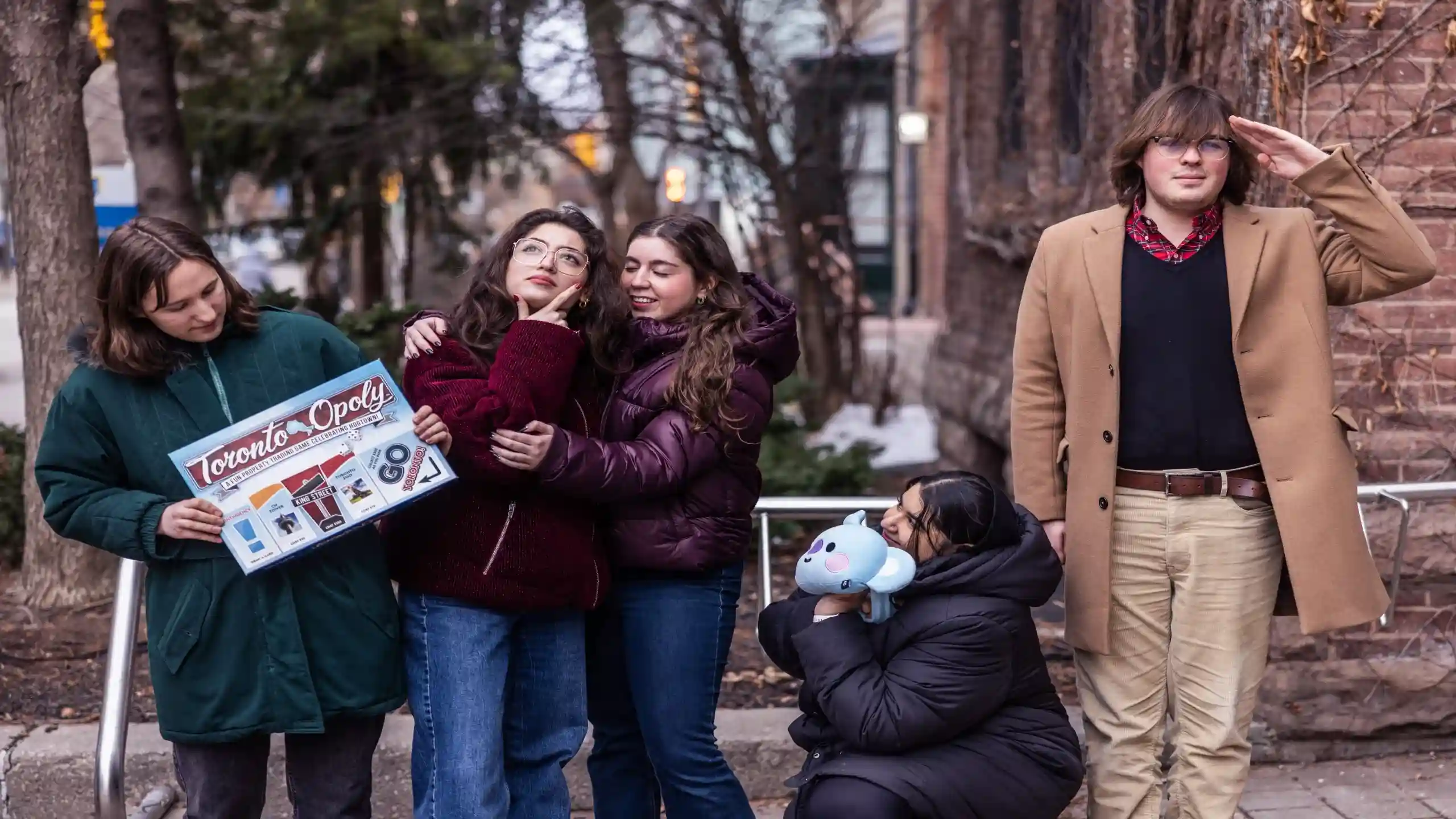Sitting in her Introduction to Anthropology, Psychology and Sociology (APS) class, Andrea Llorens listened attentively as her teacher described the five different ways people receive and express love in a relationship. Llorens, who was a senior in high school at the time, remembers thinking about how the concept of the five love languages could apply to all relationships in one’s life—even beyond the romantic ones.
Shortly after that lesson, Llorens took The Love Language ™
quiz by Moody Publishers and discovered that her primary love language was gift giving. But the now fourth-year psychology student at Toronto Metropolitan University (TMU) says there’s a difference between gift giving and acts of service, another of the five love languages, that she couldn’t differentiate when she was younger.
“Getting gifts felt nice and it made me feel appreciated and loved. But it was actually the act of that person going out and actually doing something for me that I really appreciated,” says Llorens, who re-took the test recently and discovered that her love language is acts of service. “These things definitely can change as you grow up and have different experiences.”
In recent years, the five love languages have become a phenomenon in social media and pop culture. It is frequently used to refer to anything that brings one joy.

For example, Joe Goldberg’s character in the smash Netflix series “You” realizes his love language is violence in the third season. Ariana Grande wrote a song called “love language” where she sings about appreciating her partner for understanding her and trying to learn theirs better.
The five love languages are quality time, words of affirmation, acts of service, physical touch, and gift giving.
The concept was introduced by Gary Chapman, an author who holds a PhD in adult education, in his 1992 book
The 5 Love Languages: The Secret to Love That Lasts. From his experience in marriage counselling, he describes these five unique styles of communicating love.
Although the concept was barely heard of years prior, now many TMU students seem to know their top three and explain why with certainty.
It doesn’t matter whether you’re in a relationship or not, the idea has become a popular conversation starter. Some TMU students say the five love languages are now a pop-culture touchstone, inspiring plenty of TikToks and dating-app questions.
Whether they’re getting to know someone’s love language for the fun of it or trying to actively learn what means most to them, TMU students say relationship satisfaction, whether it’s platonic or romantic, is linked to whether the people in their lives are paying attention to their preferred love language and vice versa.
Llorens says she’s had conversations with her boyfriend about how they can cater to each other’s love languages and show each other how much they care about each other.

“You can say that you love someone ‘till you're blue in the face and you mean it, you truly do. But, for example, if their love language is not words of affirmation, they're gonna understand what you're saying but there's gonna be times where they don't feel it,” she says.
Llorens says it’s important to understand your partner’s love language because you want to ensure they feel how much you love them. It’s a matter of knowing how they’re going to feel the most loved and what’s going to make them understand that, she says.
Although the five love languages weren’t developed with a particular scientific backing, research has been done on their effectiveness due to their popularity over the years.
Due to this lack of scientific foundation, the small amount of data on love languages are mixed. According to a
study by two communication studies professors at Kent State University and West Chester University of Pennsylvania. In 2000, the five love languages can be an effective framework to help couples better communicate their wants and needs.
However,
research conducted in 2017 by professors at the School of Psychology and Counselling at Queensland University of Technology in Australia suggests that Chapman’s original model only works when both partners control and change their own behaviours to cater to their partners. The study also explains that, in heterosexual relationships, how much the female changes their behaviour plays an important role in predicting relationship satisfaction for both partners when they have different preferred love languages.
Melissa Taylor, a therapist and the clinical director for
Ancestral Memory Therapy in Toronto, says it isn’t healthy to start a relationship based on your love language. Rather, one should ask themselves how do they learn and understand love and how do they embody love in their day-to-day interactions with people?
“I don't think it's healthy at the start of a relationship to say ‘well, my love language is words of affirmation. If you don't give me words of affirmation, then I want nothing to do with you,’ right? It's not a good way to start a relationship,” says Taylor. “It makes more sense for you to know that about yourself, and to find someone who's able to echo that way of love.”
People can get themselves into trouble when they try to change their partners, says Taylor. At the root of it, it goes back to the foundations of the relationship.
“Relationships are built on all sorts of things. Some people build it on love. Some people build their relationship on respect. For some people, especially when we get to the area of marriage, it's a contract,” says Taylor.
“While understanding one another’s love languages helps improve communication and understanding, it is important to acknowledge what is ground in the partnership,” she says.
It’s also essential to understand where this information is coming from. With all sorts of “social media relationship therapists” out there, people are only receiving sound bites of information and users need to be critical around the pool of people this research has been done on and not get carried away with the information or results, says Taylor.

Since Chapman was a
Southern Baptist pastor, he based his theory on his own observations and aimed it at married straight Christian couples. The test doesn’t take into account cultural differences, emotional intelligence, and diverse lived experiences, says Taylor, warning people not to read too deeply into these tests.
“I encourage my clients not to take everything at face value. It's healthy to take everything with a grain of salt and go back to what their personal values are, more importantly, when it comes to love.”
One day after class during her senior year of high school, Vanessa Alcantara and her friends were hanging out and decided to fill out the love languages quiz. Alcantara’s result was quality time, which was no surprise to her.
“Even if it’s sitting in my room in silence for hours or even just doing something that we both love or I love to bake with my friends, that’s how I express love,” says the fourth-year human resources management student.
While it’s important to know the love languages of your friends, partner and family, she says good communication is the universal basis of a healthy and strong relationship.
“Some people don't know how to show different ways of love. And the other person receiving it can think ‘oh, I'm not being loved enough’, but it's just because there's a lack of communication within the two different love languages,” says Alcantara.
The five love languages are universal in the sense that people might be able to identify how they give and receive love, says Taylor. However, she says there’s room to include more. One of the biggest is spirituality.
“For some people, having someone in their life that prays over them means a lot more than anything else anyone can do,” says Taylor.
“I don't think it's composite at all. I think there's a lot more to explore.”



